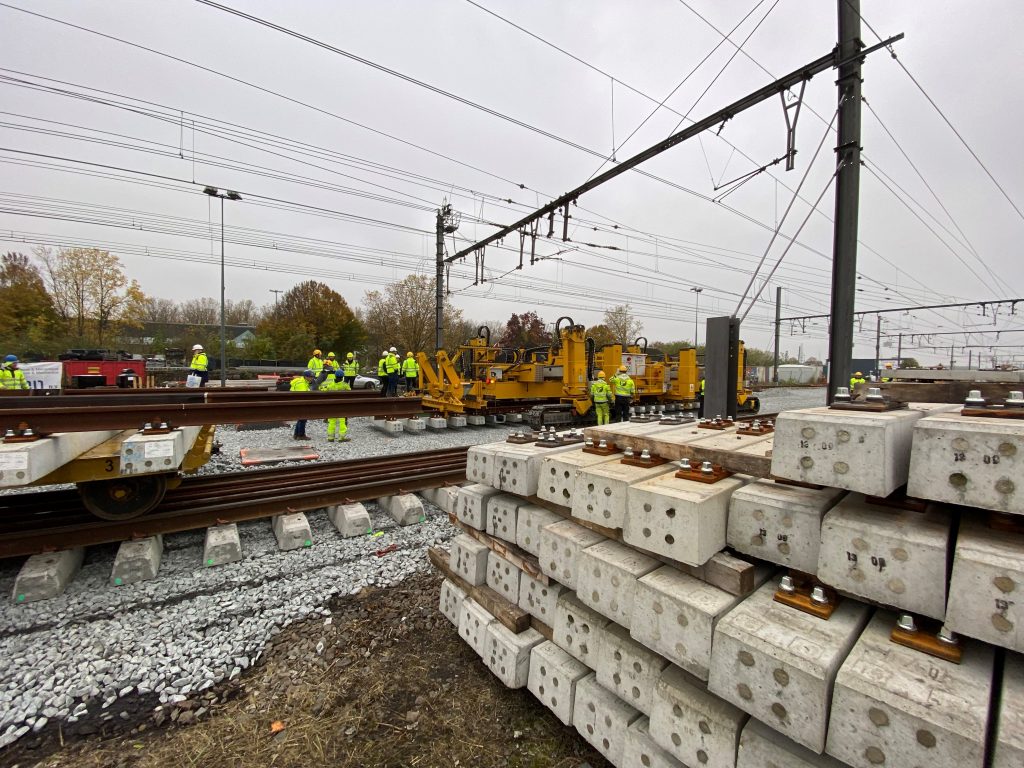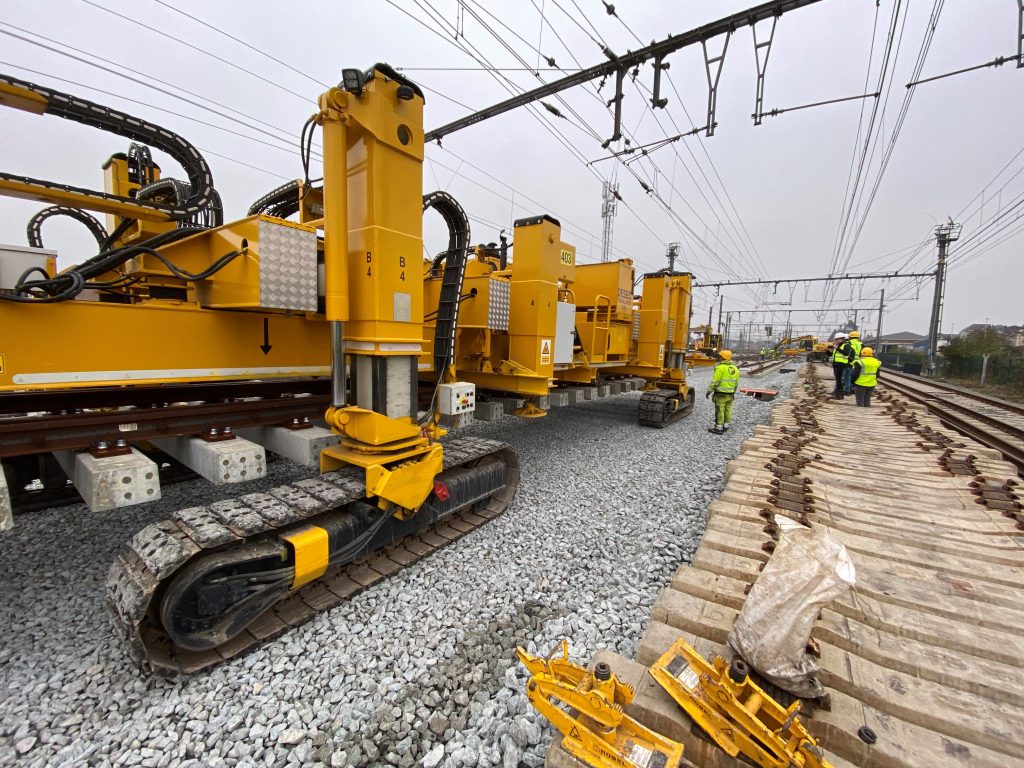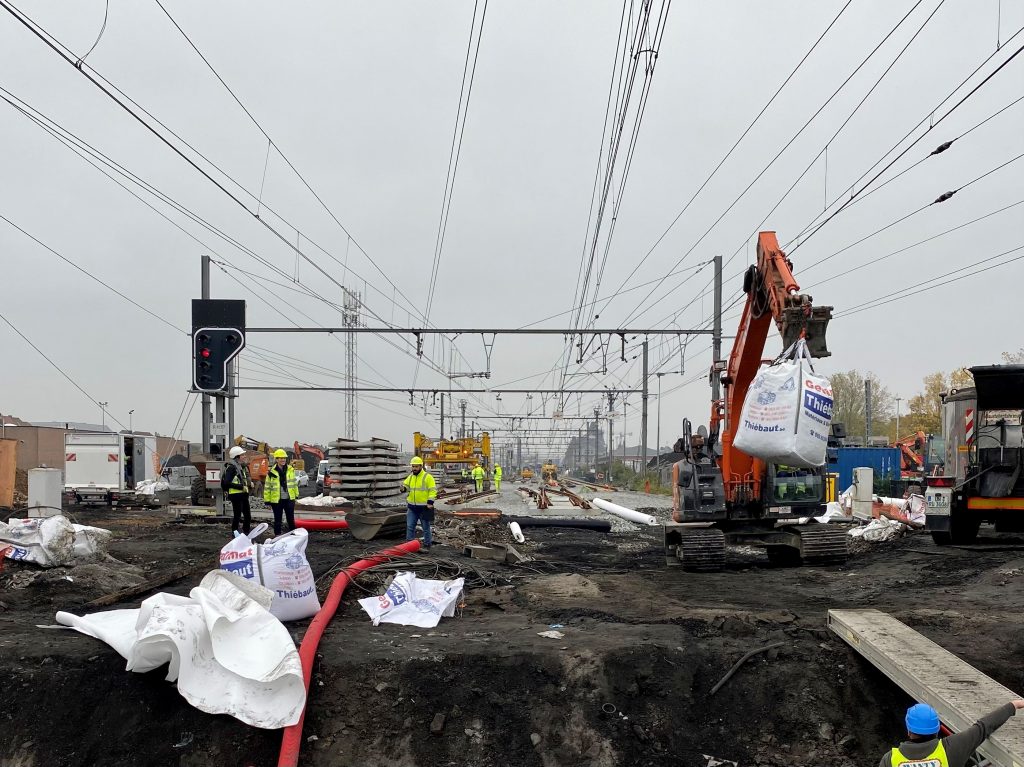6 December marks the end of one of the biggest projects of the year in Picardy Wallonia. Our colleagues from I-AM have spent more than three months working to renovate line 75A and a section of line 94.
This was aproject of unprecedented scale in the recent history of the Belgian railways – the complete renewal of two sections of the rail network in 96 days! Work began on 30 August. Technical teams from seven different disciplines were involved, most of the time 24/7.
Renovation for the next 30 to 40 years
A few figures to explain the scope of this project: 76 km of rail, more than 30,000 sleepers (wooden sleepers replaced by concrete), 9 switches and 5 bridges were renovated. The railway signalling system has also been modernised and is now a fully computerised system as required for the deployment of the European Train Control System (ETCS) at the end of 2024.
Up to 150 people have been working to modernise the main components of the railway infrastructure with the aim of refurbishing, in record time, an ageing infrastructure that has been experiencing an increasing number of incidents affecting the regularity of traffic. Otherwise, a speed limit (100 km/h instead of the current 140 km/h) would have had to be applied to take pressure off the installations and continue to guarantee safety.
The project also presented an opportunity to increase safety at various points on the network, for example in Herseaux and Froyennes, by installing inter-track fences or obstacle mats at several level crossings.
96 days of interruption rather than 3 years of disruption
“Track-by-track” renovations (one track under construction, the other in service with alternating trains) had previously been studied. Taking into account the current safety standards, which severely limit the use of machines/cranes near passing trains, it would have taken more than three years to carry out this work, working mainly at weekends and at night! Limiting traffic to one track would inevitably have caused disruption during this period.
In consultation with SNCB, Infrabel therefore decided to renovate all the infrastructure simultaneously rather than work on a “track-by-track” basis. Although difficult due to the significant impact on rail customers, this option allowed us to work more efficiently and limit the intervention period to 96 days. This seemed like a considerable time frame but, considering the scope of the work and the complexity of its synchronisation, it was a real challenge for our teams. This challenge was met on 6 December thanks to the cooperation of all stakeholders.




